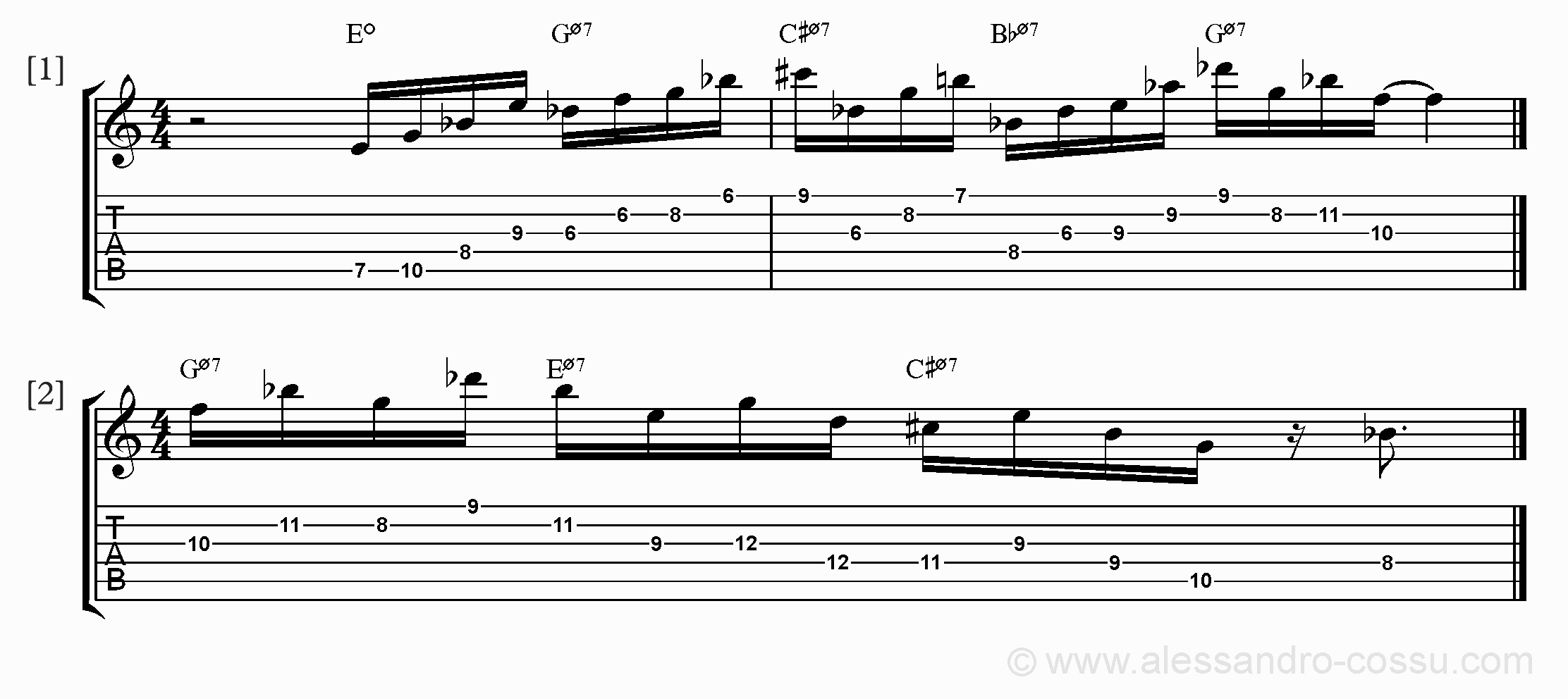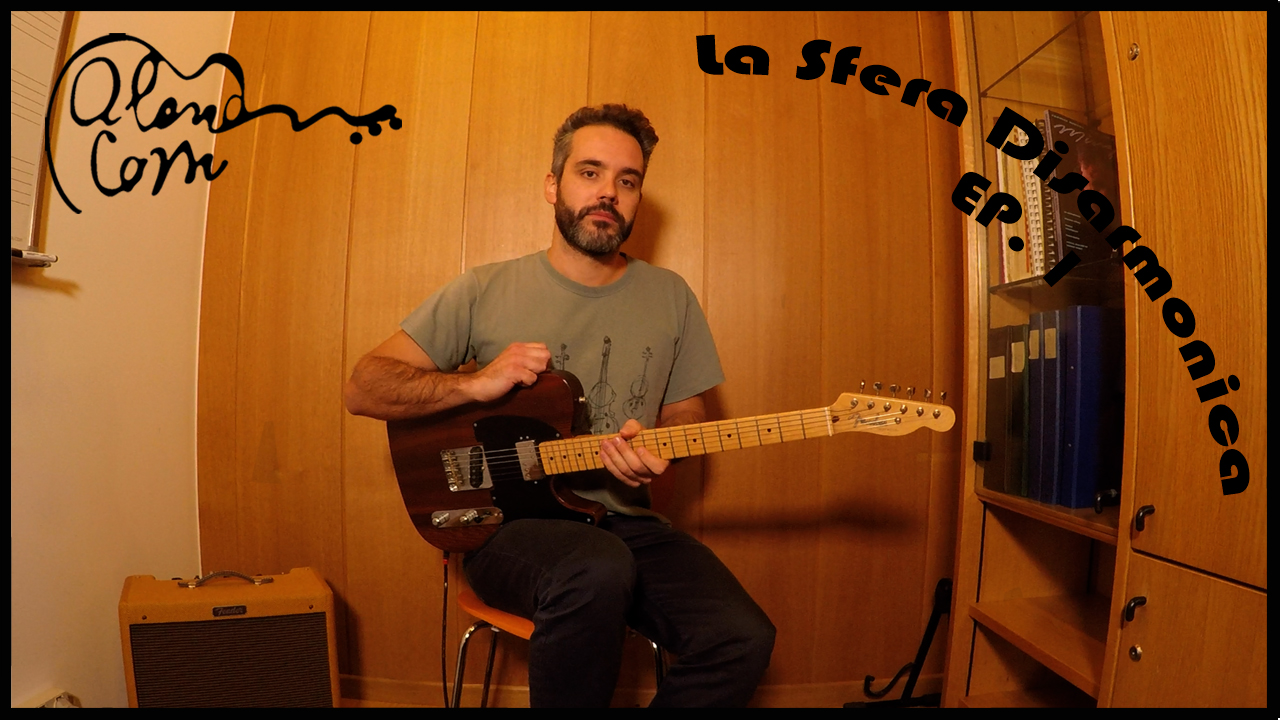
DUE FRASI SULLA SCALA DIMINUITA
29 Settembre 2015
COME VENGONO INSEGNATE LE SCALE?
29 Settembre 2018Half diminished arpeggios
The sound of the half-diminished chord is full of expressive potentials and therefore well suited to be seen from different perspectives.
I’ve tried here to imagine me studying it for the first time and so I’ve reduced it to a basic form.
Starting Off with a Simple Lick
What I did was choosing a fingering starting from the sixth string and limiting it to one octave, taking Fm7b5 as an example for the only reason that F is the note you find on the first fret.
I am considering solely the shape that these four notes trace on the guitar neck, without referring to any scale. The fingering is always made of three strings, with two notes (root and minor third) on the lower, one (diminished fifth) on the middle string and again two (minor seventh and octave) on the highest one.
This shape is then moved starting from all the F notes found, with a slide of the index finger always between Eb and F, as shown in figure.

EX. 1
Since I only have six strings, I had to use a different fingering when reaching the highest notes before descending in the second bar, even if this goes against the scheme I was following.
Also, the standard tuning of the guitar requires that all has to move up a fret when playing between the second and third string; if for instance the interval between the third fret of the second string and the first of the first string is a minor third, that between the third fret on the third string and the first fret on the second is a major second.
That’s why unfortunately we don’t have exactly the same fingering on all the octaves, but that’s how it is.
Varying the Basic Idea
The second example is just the break down of the previous line in the different octaves.

EX. 2


